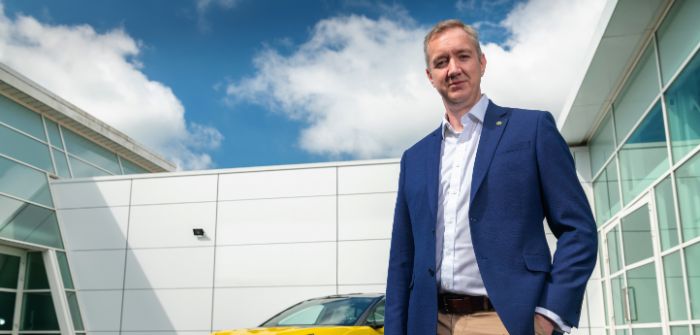Digital twin technology and artificial intelligence are all the rage, but there is no substitute for talent, says Mark Stringer, commercial director of Lotus Engineering.
The trend toward Mobility as a Service and on-demand delivery of goods to the home has driven huge demand across the automotive industry. It has led to the creation of autonomous, connected products that fulfill growing consumer needs in a way that is both environmentally sustainable and commercially attractive, opening up further opportunities for new mobility products and business models.
It has sparked a shift away from personally owned modes of transportation and a move toward flexible
service-based transportation, achieved through digital enablement for users to plan, book and pay for multiple types of mobility services.
In the automotive industry there’s inevitably still a lot of focus on vehicles. There is still a huge amount
of development taking place, particularly in the transition to alternative propulsion systems and the race to transportation services through L4 and L5 autonomous systems. However, if we look at the mobility options beyond the car, so much is yet to be defined, from the products themselves to the service models and use cases. Crucial to developing these products is adept understanding of the product use cases, consumers and where each product fits within the mobility ecosystem.
Digital twins and AI are undoubtedly crucial tools in this journey, but there really is no substitute for
talent. Talent is about people – their expertise and their experiences. It’s people who are instrumental in closing the loop on the product development process that an engineering consultancy can offer to its clients. It’s people who are engaged right at the start of the process to work with the client to establish the end user requirements, define the characteristics of the market segment and ensure that together, a robust, achievable set of technical targets that are in line with the desired product positioning are created. Try doing that with digital twins and artificial intelligence!
It is people who can take full advantage of the wide range of physical and virtual tools at their disposal – test tracks, engine dynos, test rigs and fabrication facilities, a wide range of in-house-developed and off-the-shelf software to deliver that digital twin, and a growing use of AI-based tools. It is people who really make the difference in this business, who deliver and receive the feedback from the client, and develop the personal relationships that build confidence, trust and success.


